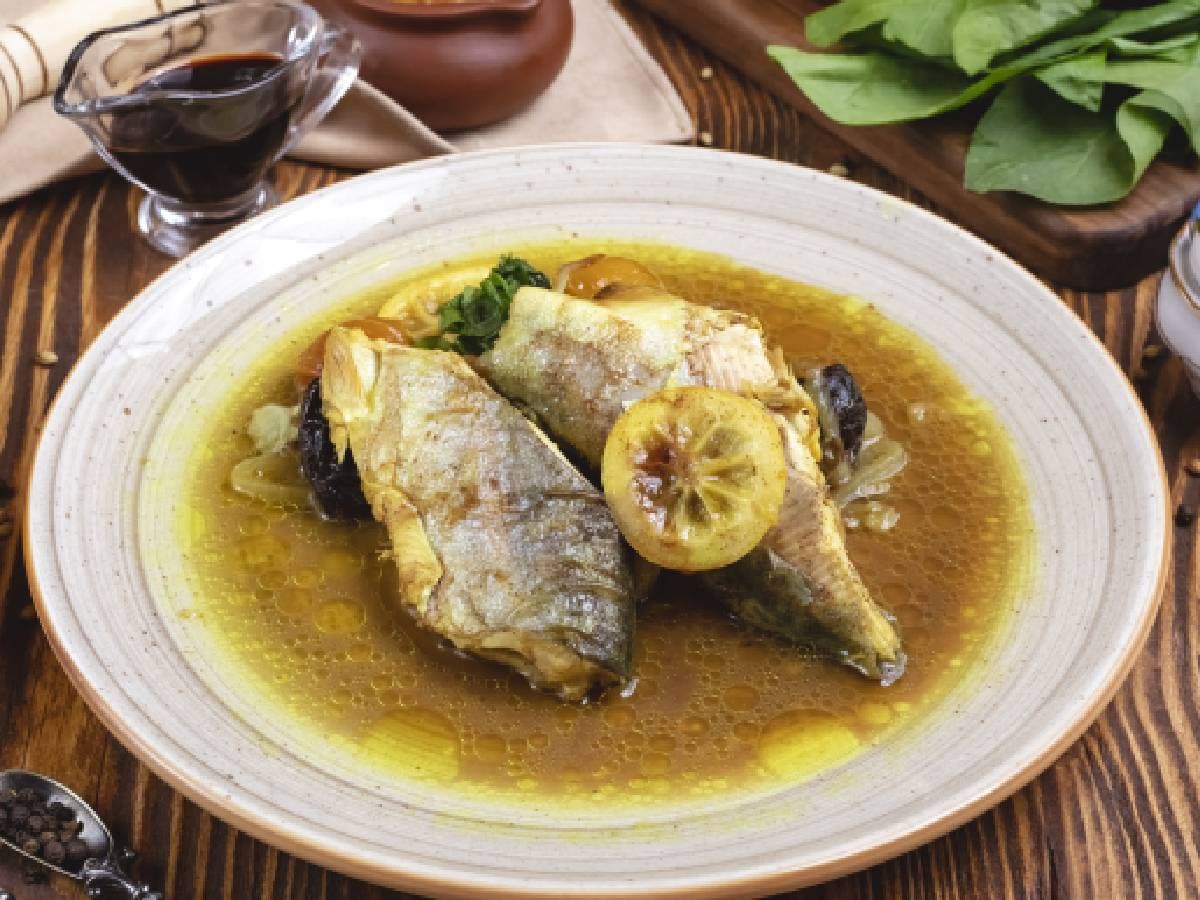In the vast and flavorful world of seafood, few delights can match the rich, buttery essence of sablefish. Often hailed as the cream of the ocean’s crop, this deep-water treasure offers a culinary experience that’s both luxurious and profoundly satisfying.

As we dive into the depths of what makes sablefish so special, we’ll explore not just its unparalleled taste and texture but also its nutritional benefits, culinary uses, and how it stands up against other popular fish like cod. Whether you’re a seasoned chef or a curious foodie, this article promises to unveil the secrets behind the buttery phenomenon of sablefish, guiding you through its culinary journey from ocean depths to gourmet plates.
Introduction to Sablefish
Overview of Sablefish
Sablefish, also known as black cod, reigns from the murky depths of the Pacific Ocean, where its environment contributes to its unique, buttery flavor and tender texture. Unlike its name suggests, sablefish is not actually a type of cod, which adds an interesting twist to its culinary profile. This deep-sea dweller is a powerhouse of omega-3 fatty acids, making it not just a treat for the taste buds but also a boon for heart health.
The allure of sablefish extends beyond its taste; its nutritional profile is equally impressive. Rich in essential nutrients, it offers a healthy dose of protein while being remarkably low in mercury, a common concern with seafood. This combination of taste and health benefits makes sablefish a sought-after ingredient in kitchens around the globe.
Sablefish in Culinary Arts
In the realm of culinary arts, sablefish is a true star. Its rich, buttery flavor and flaky texture have earned it a place in the menus of high-end restaurants, where chefs celebrate its versatility and luxurious mouthfeel. Whether it’s grilled, smoked, or baked, sablefish adapts beautifully to a variety of cooking methods, each serving to enhance its natural flavors.
The popularity of sablefish in gourmet cooking can be attributed to its ability to absorb flavors while maintaining its distinct, buttery essence. This makes it an ideal canvas for culinary experimentation, allowing chefs to craft dishes that are as nutritious as they are delicious. From simple, pan-seared fillets to elaborate preparations that showcase its delicate texture, sablefish offers a culinary adventure like no other.
As we continue to explore the wonders of sablefish, it’s clear that this fish is more than just a meal; it’s a testament to the ocean’s ability to provide us with food that is as healthy as it is flavorful. Stay tuned as we delve deeper into the buttery world of sablefish, uncovering the secrets behind its taste, nutritional benefits, and much more.
The Buttery Nature of Sablefish
Flavor Profile of Sablefish
The buttery essence of sablefish is not just a culinary term but a testament to its rich, velvety texture and deep, nuanced flavor. This distinctive taste, often likened to that of more luxurious seafood like lobster or crab, sets sablefish apart in the seafood hierarchy. Its flavor is a complex symphony of sweetness and umami, with a melt-in-your-mouth quality that’s hard to find in other fish. This unique profile is the result of its high fat content, particularly omega-3 fatty acids, which not only contribute to its health benefits but also to its rich, indulgent taste.
Culinary Uses of Sablefish
In the kitchen, sablefish is a versatile performer, capable of starring in a wide range of dishes. Its buttery texture makes it ideal for smoking, a method that enhances its natural flavors and results in a product that’s both delicate and deeply satisfying. Grilling, another popular option, brings out a slightly crispy exterior while preserving the moist, tender interior that sablefish is celebrated for.
But the culinary journey of sablefish doesn’t stop there. It’s also exceptional when baked or broiled, techniques that complement its rich flavor without overpowering it. Chefs and home cooks alike revel in its ability to pair wonderfully with a variety of seasonings and ingredients, from simple salt and pepper to more elaborate sauces and glazes. This adaptability makes sablefish a favorite for those looking to explore the depths of seafood cuisine, offering a gateway to dishes that are as nourishing as they are flavorful.
The buttery nature of sablefish is more than just a hallmark of its taste; it’s a bridge to a world of culinary creativity. Whether you’re crafting a simple, home-cooked meal or a sophisticated, restaurant-quality dish, sablefish provides a foundation that’s both inspiring and accessible. Its unique combination of flavor, texture, and nutritional value makes it a standout choice for anyone looking to elevate their cooking with the rich, luxurious essence of the sea. As we continue to explore the multifaceted world of sablefish, it’s clear that this remarkable fish is not just food but a culinary treasure waiting to be discovered.
Sablefish vs. Other Fish
Comparison with Cod
When pitting sablefish against its oceanic counterparts, particularly cod, the contrasts in flavor and texture become strikingly apparent. While both fish are celebrated for their versatility and mild flavor profiles, sablefish takes the lead with its richer, more buttery taste and softer texture. Cod, on the other hand, offers a firmer, meatier bite and a subtler taste, making it a favorite for traditional dishes like fish and chips. However, when it comes to a direct comparison, sablefish often emerges as the more flavorful option, its lush, velvety texture and depth of taste providing a culinary experience that cod struggles to match.
The nutritional showdown between these two seafood staples further highlights their differences. Sablefish boasts a higher content of omega-3 fatty acids, making it a superior choice for heart health and overall wellness. Cod, while still a healthy option, offers less in the way of these beneficial fats, positioning sablefish as the more nutritious pick.
Sablefish and Sushi
The world of sushi presents another arena where sablefish shines. Its buttery texture and rich flavor make it an exceptional choice for sushi and sashimi, offering a melt-in-your-mouth experience that’s hard to replicate with other fish. While cod can also be used in sushi, it typically requires more seasoning or marinating to bring out its flavor, whereas sablefish stands out with minimal embellishment, its natural taste and texture elevating the sushi experience.
This preference for sablefish in sushi highlights its versatility and the unique culinary value it brings to the table. Whether served raw or cooked, sablefish delivers a level of sophistication and satisfaction that is unmatched, making it a prized ingredient among sushi chefs and seafood aficionados alike.
In the culinary comparison between sablefish and other fish, it’s clear that sablefish occupies a special place. Its unparalleled buttery flavor, tender texture, and nutritional benefits set it apart, offering a seafood experience that’s both indulgent and healthful. As we delve deeper into the attributes that make sablefish a standout choice, its reputation as a culinary delight continues to grow, cementing its status as a must-try for anyone seeking the best the ocean has to offer.
Cooking and Preparing Sablefish
Best Practices in Cooking Sablefish
Cooking sablefish is an art that celebrates its buttery texture and rich flavor. To fully harness these qualities, certain techniques stand out, ensuring that every bite is as luxurious as the last. Grilling sablefish is a popular method, where the high heat crisps the exterior while keeping the interior moist and tender. This method accentuates the fish’s natural flavors, allowing its buttery essence to shine through.
Baking and broiling are equally effective, offering a gentler approach that envelops the fish in steady, indirect heat. These methods are perfect for infusing sablefish with additional flavors from herbs, spices, or marinades, complementing its rich taste without overwhelming it. The key is to monitor the cooking closely, as its delicate texture can easily overcook, moving from perfect to dry in a matter of moments.
Recipe Ideas
The versatility of sablefish opens up a world of culinary possibilities. For a simple yet sublime dish, consider a miso-glazed sablefish, where the sweetness of the miso pairs beautifully with the fish’s natural richness. This dish, often broiled to achieve a caramelized exterior, is a testament to the sablefish’s ability to transform simple ingredients into a gourmet experience.
For those looking to explore the buttery depths of sablefish, a smoked sablefish dip offers a casual yet sophisticated take. The smoking process enhances the fish’s flavor, while blending it into a creamy dip makes for an irresistible appetizer or snack, showcasing sablefish’s adaptability across different culinary contexts.
Cooking sablefish is not just about the methods used but also about the journey of flavors it offers. From the smoky depths of a grilled fillet to the subtle sweetness of a baked dish, sablefish invites experimentation and innovation, making it a beloved ingredient among those who appreciate the finer tastes in life. As we continue to explore the culinary wonders of sablefish, it’s clear that this fish is not just a meal but an experience, offering endless possibilities for those willing to dive into its buttery world.
FAQs
Is Sablefish More Expensive Than Cod?
Yes, sablefish tends to be more expensive than cod, and for good reason. Its rich, buttery flavor, delicate texture, and nutritional benefits, including a high content of omega-3 fatty acids, set it apart from other fish. The cost reflects not only its superior culinary qualities but also its scarcity and the demand for it in both domestic and international markets. While cod is more widely available and thus more affordably priced, sablefish offers a unique taste experience that many seafood lovers find worth the extra expense.
Can Sablefish and Cod Be Cooked the Same Way?
While both sablefish and cod can be prepared using similar methods, such as grilling, baking, and broiling, the unique characteristics of sablefish require a slightly different approach to fully appreciate its buttery texture and rich flavor. Sablefish benefits from shorter cooking times and lower temperatures to prevent drying out its delicate flesh. Additionally, its natural richness allows it to pair well with a broader range of flavors and ingredients, from simple seasonings to more complex sauces and marinades. In contrast, cod, with its firmer texture and milder flavor, might need more seasoning or a different cooking technique to enhance its taste.
Which Fish Is Better for Sushi, Sablefish or Cod?
Sablefish, with its buttery texture and rich flavor, is often preferred for sushi due to its ability to offer a luxurious, melt-in-your-mouth experience. Its natural oiliness and delicate flesh make it an excellent choice for raw preparations, where the quality of the fish is paramount. Cod, while also used in sushi, typically requires more preparation, such as marinating, to enrich its flavor and texture for raw consumption. Therefore, for an authentic and indulgent sushi experience, sablefish is the preferred choice among chefs and connoisseurs alike.
Conclusion
In the exploration of sablefish, from its buttery essence to its culinary versatility and nutritional value, it’s clear that this fish holds a special place in the world of seafood. Its unique flavor profile, which combines richness with a delicate texture, sets it apart from other fish, offering a dining experience that’s both indulgent and satisfying. Whether through grilling, baking, or enjoying raw in sushi, sablefish invites a journey of culinary discovery, promising delights that cater to a wide range of tastes and preferences.
The comparison with cod, while highlighting the versatility and appeal of both fish, underscores sablefish’s distinctive qualities, making it a sought-after ingredient for those looking to elevate their cooking or dining experience. The higher cost of sablefish reflects its rarity and the culinary luxury it represents, making it a worthy indulgence for special occasions or for those seeking the very best from the sea.
As we conclude our deep dive into the world of sablefish, it’s evident that this fish is more than just a meal; it’s a testament to the ocean’s bounty, offering flavors and textures that inspire both chefs and diners to explore the depths of seafood cuisine. Sablefish stands as a culinary treasure, inviting all who taste it to appreciate the rich, buttery wonders it brings to the table.


